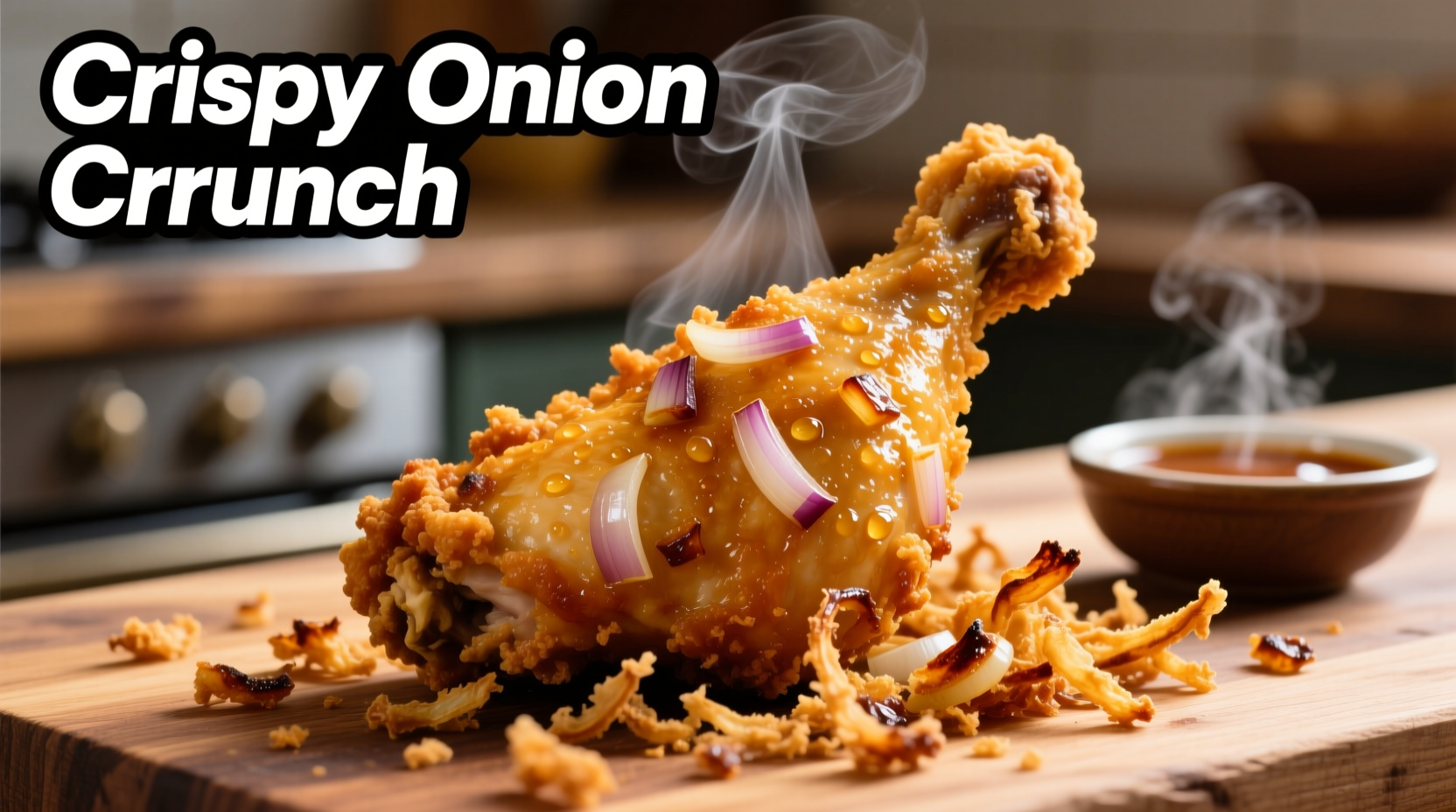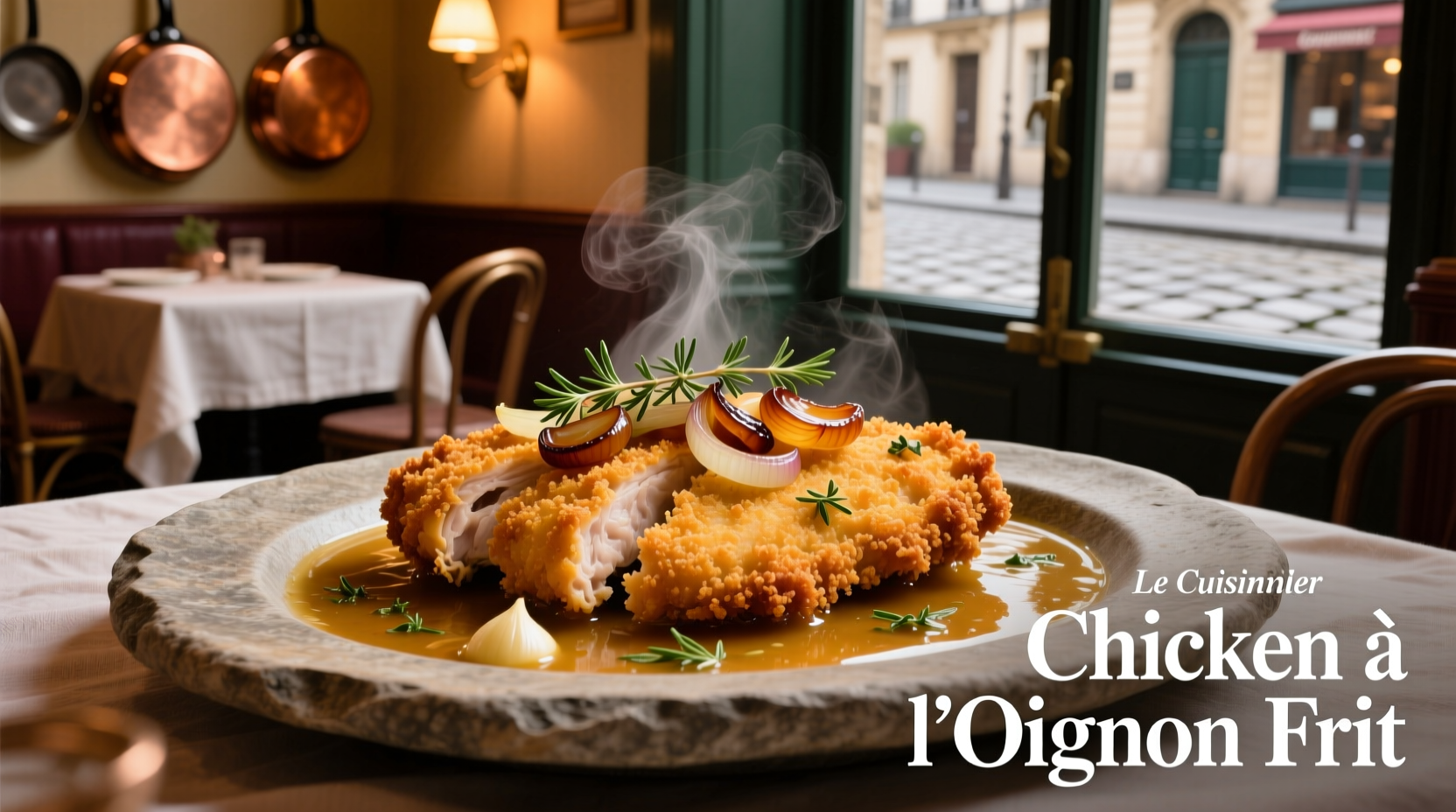French fried onion chicken combines succulent chicken pieces with crispy, golden-brown fried onions for a dish that's both comforting and impressive. Whether you're preparing it for a family dinner or special occasion, mastering this recipe means understanding the precise techniques that create perfect texture contrast between the juicy chicken and crunchy topping.
What Makes This French Fried Onion Chicken Recipe Stand Out
Unlike basic fried chicken recipes, French fried onion chicken features a distinctive topping of thinly sliced onions that are fried until crisp and layered over the chicken. The magic happens when the onions' natural sugars caramelize while maintaining their structure, creating a sweet-savory contrast that complements the seasoned chicken perfectly.
Essential Ingredients for Authentic Flavor
The beauty of French fried onion chicken lies in its simplicity. You'll need just a few quality ingredients:
- 4 bone-in, skin-on chicken thighs or breasts (1.5-2 lbs)
- 1 large yellow onion, thinly sliced (about 2 cups)
- 1 cup all-purpose flour
- 2 teaspoons paprika
- 1 teaspoon garlic powder
- 1 teaspoon onion powder
- 1/2 teaspoon cayenne pepper (optional)
- Salt and freshly ground black pepper to taste
- Vegetable oil for frying (about 1 inch depth)
- 2 tablespoons butter
| Ingredient | Why It Matters | Substitution Options |
|---|---|---|
| Yellow onions | Higher sugar content creates better caramelization | Vidalia (sweeter) or red onions (more color) |
| Bone-in chicken | Retains moisture during cooking | Boneless cuts (reduce cooking time by 5-7 minutes) |
| Vegetable oil | High smoke point for consistent frying | Peanut or canola oil |
Step-by-Step Preparation Guide
Preparing the Chicken
Dry the chicken thoroughly with paper towels—this critical step ensures proper browning. Season generously with salt and pepper, then let sit at room temperature for 20 minutes while you prepare the onions. According to the USDA Food Safety and Inspection Service, bringing chicken to room temperature before cooking promotes more even cooking and reduces the risk of undercooked spots.
Slicing and Frying the Onions
Use a mandoline or sharp knife to slice onions uniformly (1/8-inch thick). Heat 1/2 inch of oil in a skillet to 350°F (175°C)—this precise temperature is essential for achieving crispy onions without excessive oil absorption. Fry onions in small batches for 2-3 minutes until golden, then drain on paper towels. The Culinary Institute of America confirms that maintaining consistent oil temperature prevents onions from becoming greasy.

Cooking the Chicken to Perfection
Heat 1 inch of oil to 325°F (163°C) in a heavy skillet. Combine flour and seasonings in a shallow dish. Dredge chicken pieces thoroughly, shaking off excess. Fry chicken skin-side down for 12-15 minutes until golden brown and internal temperature reaches 165°F (74°C). Flip and cook 5-7 minutes more. Proper oil temperature monitoring prevents the common mistake of undercooked chicken with burnt exterior—a frequent food safety concern noted by CDC food safety guidelines.
Pro Tips for Restaurant-Quality Results
For extra-crispy chicken, add 2 tablespoons cornstarch to the flour mixture. Let the dredged chicken rest for 5 minutes before frying to help the coating adhere. When frying onions, add a pinch of sugar to accelerate caramelization without burning. The FoodSafety.gov recommends using a thermometer to verify chicken reaches safe internal temperature, eliminating guesswork.
Serving Suggestions and Variations
Serve French fried onion chicken immediately while hot and crispy. Pair with mashed potatoes and green beans for a classic comfort meal. For a modern twist, add a splash of balsamic reduction over the finished dish. This versatile recipe adapts well to different flavor profiles:
- Spicy version: Add 1 teaspoon cayenne to the flour mixture
- Herb-infused: Mix 1 tablespoon chopped fresh thyme into the flour
- Gluten-free: Substitute almond flour for all-purpose flour
Storage and Reheating Instructions
Store leftovers in an airtight container in the refrigerator for up to 3 days. To maintain crispiness when reheating, place chicken on a wire rack over a baking sheet and warm in a 375°F (190°C) oven for 10-12 minutes. Avoid microwaving, which makes the coating soggy. For longer storage, freeze cooked chicken (without sauce) for up to 2 months—thaw overnight in the refrigerator before reheating.
Why This Recipe Works Every Time
The success of French fried onion chicken hinges on precise temperature control and proper ingredient preparation. By understanding the science behind oil temperatures and moisture management, you transform simple ingredients into an impressive dish. The contrast between the juicy chicken interior and the sweet, crispy onion topping creates a textural experience that keeps everyone coming back for more.











 浙公网安备
33010002000092号
浙公网安备
33010002000092号 浙B2-20120091-4
浙B2-20120091-4